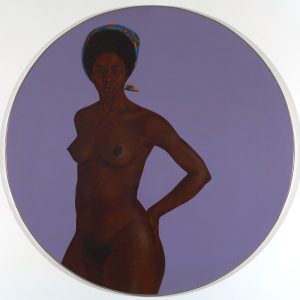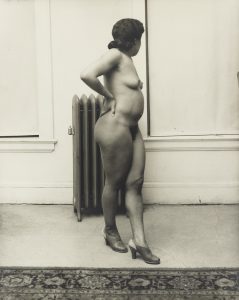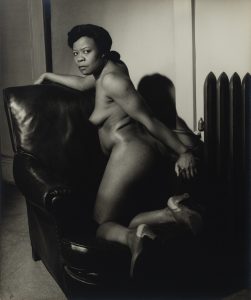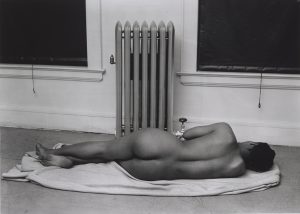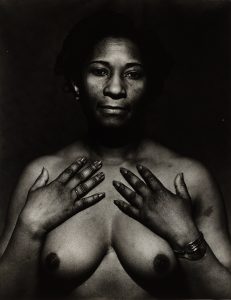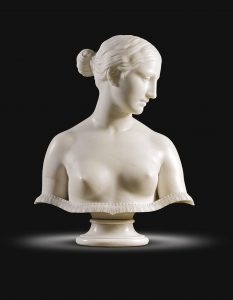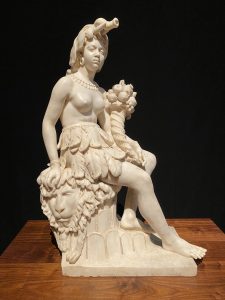Barkley L. Hendricks (American, 1945–2017)
oil on canvas
48 in. (121.92 cm)
Lent by “Friends of the Museum.” © Estate of Barkley L. Hendricks. Courtesy of the artist’s estate and Jack Shainman Gallery, New York.
With a piercing gaze, stern facial expression, and a hand on her hip, the subject of this nude portrait stands defiantly before us. As art historian Judith Wilson notes, before the 1960s there was a “paucity of Black nudes in U.S. artistic production,” likely due to negative racial and sexual stereotypes that circulated about the Black female body. After the 1960s artworks depicting the Black nude become a subject matter adopted by contemporary Black artists, often male and often as a celebration of the “Black Is Beautiful” movement. Sister Lucas’s hairstyle further suggests this connection. She dons a dense afro with a colorful scarf loosely tied around her hair. Hendricks’s choice to depict the hair in such a fashion also brings to mind the natural hair movement of the 1960s and ‘70s as a sign of Black cultural pride. Sister Lucas thus inserts new rhetoric and imagery into the void of visual vocabulary associated with Black female bodies.
